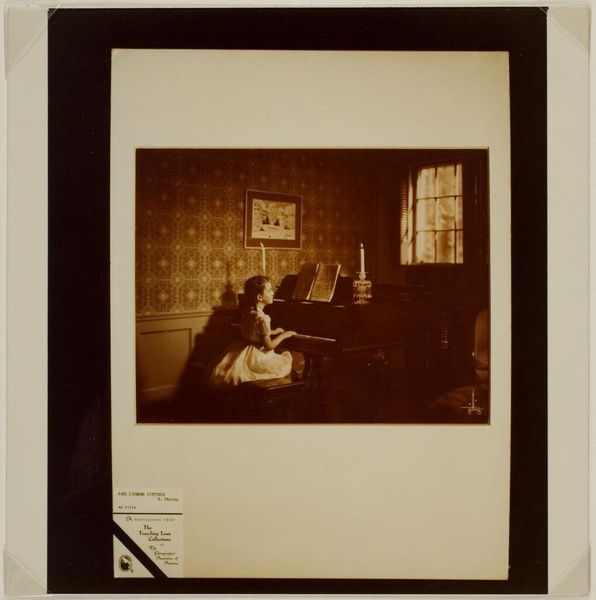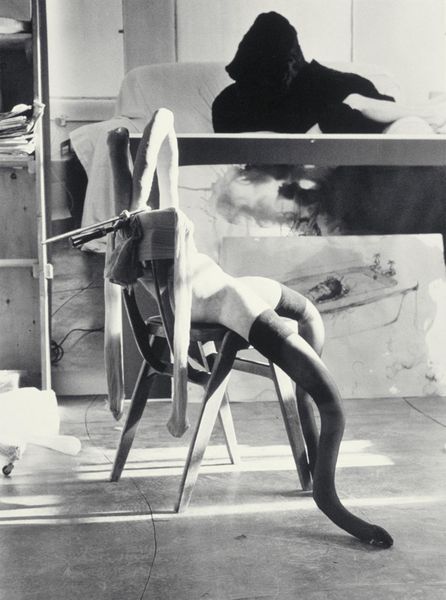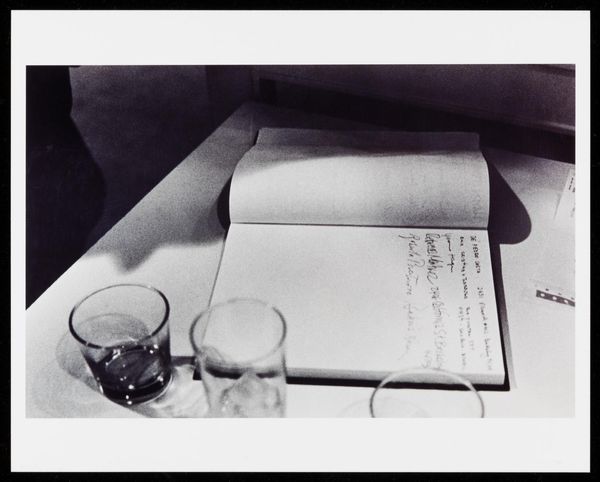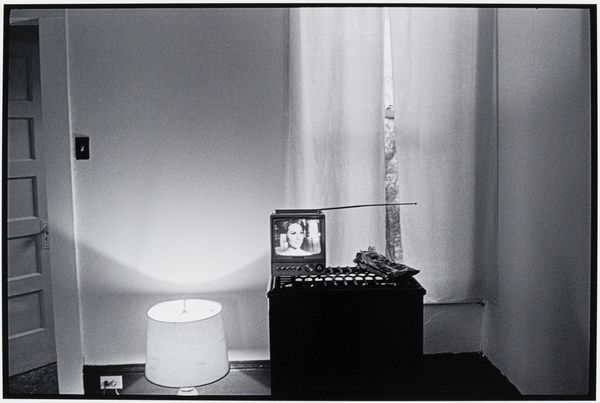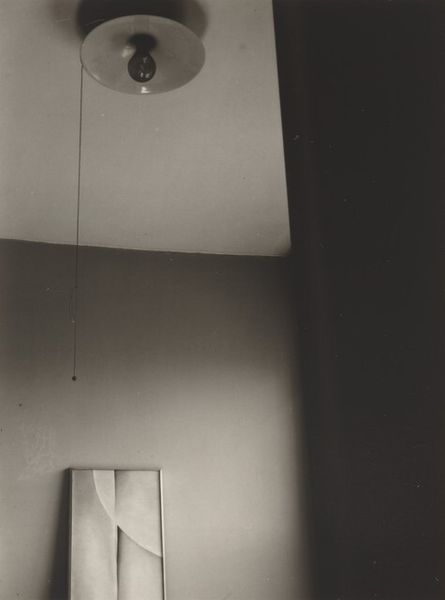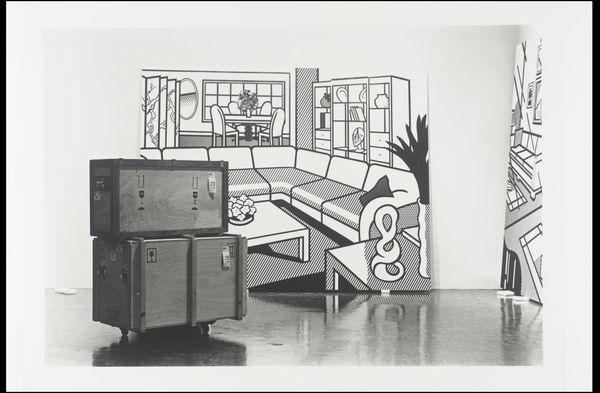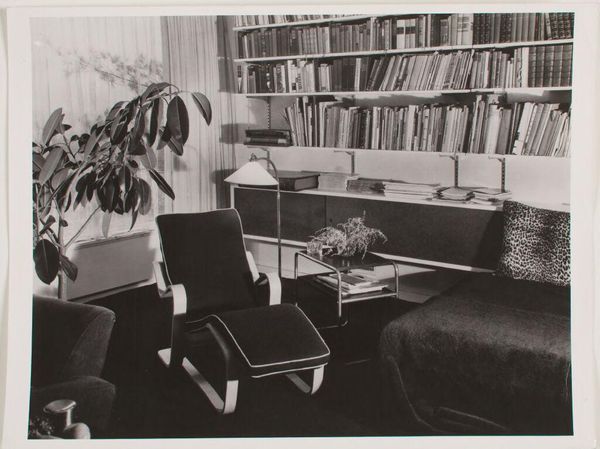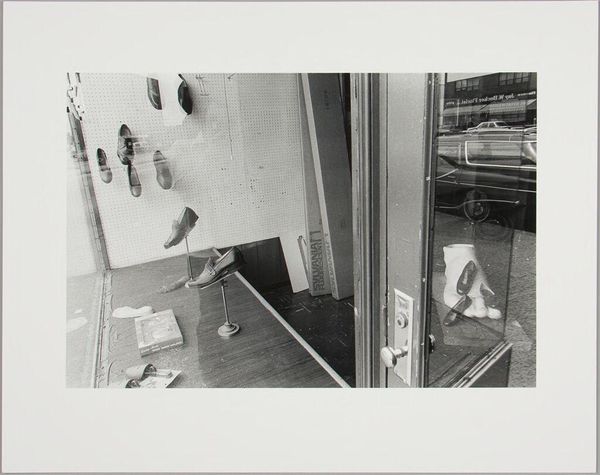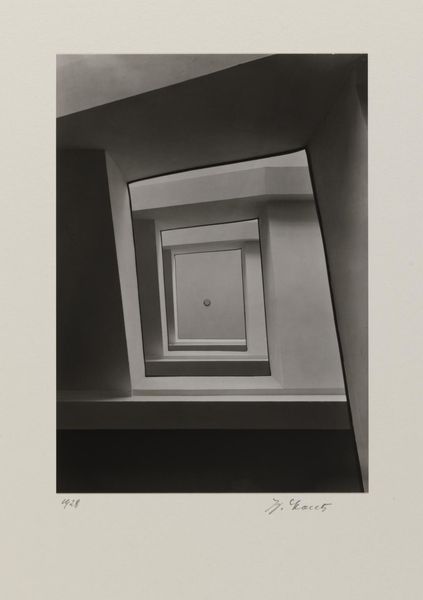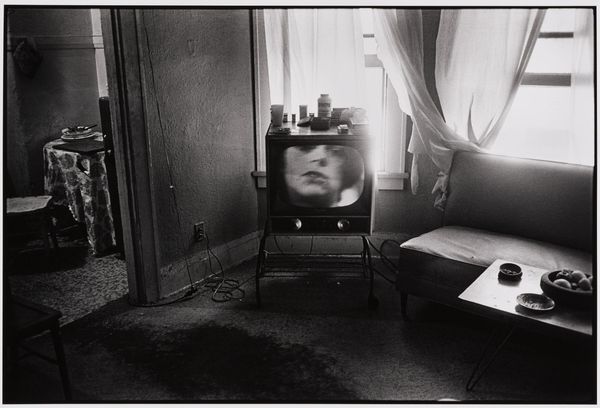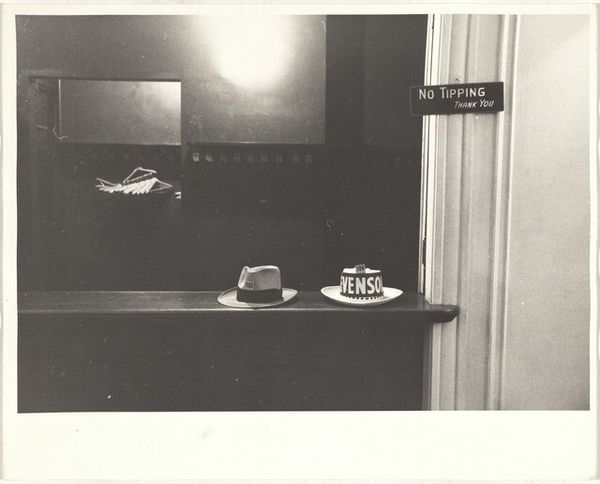
Dimensions: image: 395 x 590 mm
Copyright: © Louise Lawler, courtesy of Metro Pictures, NY | CC-BY-NC-ND 4.0 DEED, Photo: Tate
Editor: This is Louise Lawler's "Etude pour La Lecture, 1923, This Drawing is for Sale, Paris." It’s a photograph, and I’m struck by how staged and self-aware it feels. How do you interpret this work, considering Lawler's focus on the art market? Curator: Lawler critiques the art world's mechanisms. The stacked artworks, the "for sale" aspect, and the domestic setting all point to the commodification of art and its integration into a lifestyle. How does this presentation affect your perception of the art itself? Editor: It makes me question the value we place on art and how context influences that value. The setting seems almost deliberately casual, yet every element feels carefully chosen. Curator: Precisely. Lawler challenges the idea of inherent artistic value, highlighting instead the role of display, ownership, and the market in constructing that value. This makes me think about the political economy of art production. Editor: I hadn't considered how deeply embedded art is within economic and social structures. Thanks! Curator: It certainly gives us a lot to consider about the value and cultural location of art.
Comments
tate 6 months ago
⋮
http://www.tate.org.uk/art/artworks/lawler-etude-pour-la-lecture-1923-this-drawing-is-for-sale-paris-p79770
Join the conversation
Join millions of artists and users on Artera today and experience the ultimate creative platform.
tate 6 months ago
⋮
Etude pour La Lecture, 1923, This Drawing is for Sale, Paris, 1985 is a gelatine silver print showing a corner in a Paris room. The image is a careful composition of vertical and horizontal lines made up by architectural features in the background and, in the foreground, a square-edged leather covered chair on the right and a group of framed artworks, stacked against the wall, on the left. A free-standing ashtray in the image centre firmly anchors the composition on its vertical-horizontal axis: its narrow metal tube stand creating a strong vertical line and the ashtray repeating the horizontal plane of the chair arm below it. One artwork is visible in its entirety: a drawing by Fernand Léger (1881-1955) showing two women, one standing and one reclining, both holding books. Propped on a much larger frame that is turned towards the wall, the image – Etude pour La Lecture, 1923 – reinforces the combination of horizontal and vertical elements in Lawler’s picture. Below it, a painting of an organic form, also by Léger (La Racine, 1934), is partially visible behind the arm of the chair.
